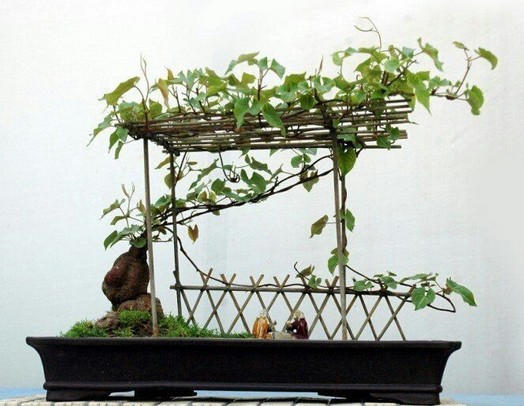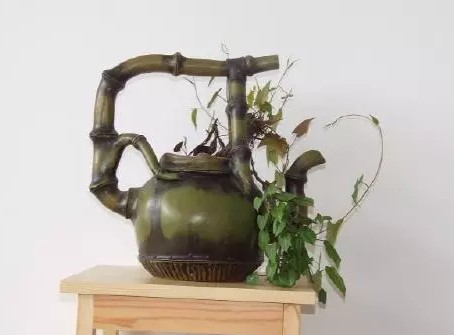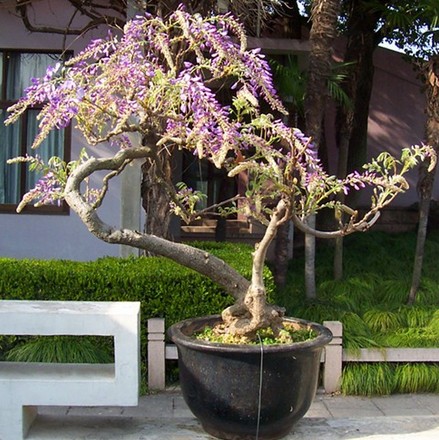How to shape the bonsai of Polygonum multiflorum
Although Polygonum multiflorum has large tuber roots, the vines are so weak that they can hardly form an obvious trunk, so the method of replacing the trunk with tuber roots can be considered when modeling.

It can also be modeled as an "ornamental stone" by making use of the characteristics of enlarged tuber roots and resembling stubborn stones, which can be planted individually or combined with several plants.
The part of the vine can be chosen according to the needs of the model. after spreading the leaves, pay attention to pruning, so that the level is clear, so that the vine is too long, climbing everywhere, appears to be messy.
In addition, miniature "scaffolding" or "fence" can also be set up in the flowerpot to climb the vines to form a simple and remote farmyard landscape, so that the bonsai has an idyllic mood.
"chatting wine to drinking and farming mulberry hemp" is one such work, and its production process is as follows:
Plant a natural and quaint Polygonum multiflorum root in the corner of a rectangular flowerpot, make scaffolding and fence with chopsticks, and lead the vines of Polygonum multiflorum to the scaffolding and then to the fence. after pruning, shaping, water control and other measures, the vines are compact and the leaves are small and thick, which makes the bonsai in proper proportion, and then plant some grasses on the surface of the flowerpot to make the natural landscape. Finally, two old people dressed in ancient Chinese clothes and drinking alcohol are placed in the right place to make the bonsai more vivid and idyllic.
Time: 2019-06-13 Click:
- Prev

Pruning skills of Polygonum multiflorum bonsai
Many people know that Polygonum multiflorum is a medicinal plant, which has many functions, such as tonifying essence and blood, black hair, strengthening muscles and bones, tonifying liver and kidney and so on. In fact, it is also a good ornamental plant, which can make bonsai by making use of its simple roots, rich variety, luxuriant branches and beautiful leaves.
- Next

Cultivation of wisteria bonsai
Wisteria, perennial woody vine of the genus Wisteria in Leguminosae. The flower is purple, the florescence is 46 months, the raceme is drooping, the pod is flat, long and ornamental. Wisteria likes warm, moist and sunny, shade-resistant, drought-resistant, loose, fertile, good sunny ground, and avoid strong winds.
Related
- Fuxing push coffee new agricultural production and marketing class: lack of small-scale processing plants
- Jujube rice field leisure farm deep ploughing Yilan for five years to create a space for organic food and play
- Nongyu Farm-A trial of organic papaya for brave women with advanced technology
- Four points for attention in the prevention and control of diseases and insect pests of edible fungi
- How to add nutrient solution to Edible Fungi
- Is there any good way to control edible fungus mites?
- Open Inoculation Technology of Edible Fungi
- Is there any clever way to use fertilizer for edible fungus in winter?
- What agents are used to kill the pathogens of edible fungi in the mushroom shed?
- Rapid drying of Edible Fungi

